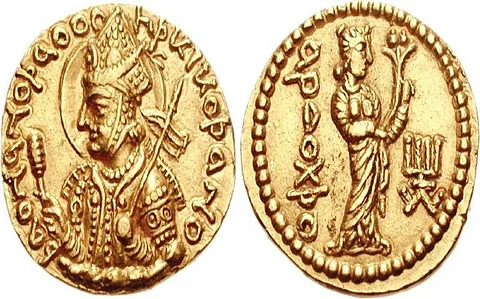
- Home
- न्यूजग्राम
- India
- World
- Politics
- Entertainment
- Culture
- Lifestyle
- Economy
- Sports
- Sp. Coverage
- Misc.
- NewsGram Exclusive
- Jobs / Internships

July 20, 2017: The Kushan Dynasty had ruled many parts of India about 2000 years ago. The academic literature has not dug deep enough to find out about the lifestyle of the Kushans. However, the symbols used in popular gold coins of the Kushan period tell us a little bit more about these people.
The records maintained by surrounding civilizations and dynasties are not proven precise. The sketchy details have only helped in painting a somewhat abstract picture of the Kushans. To this day we do not know the language that was spoken by the Kushans. While some believe that they spoke a form of Chinese, others believe their dialect came from Indo European languages.
[bctt tweet="Kushans came to India in the 2nd century from China." username="NewsGramdotcom"]
However, it is certain that these people came to India in the 2nd century from China. They were among the many nomads and horsemen, emerging out of the branch of Yuezhi people. The Huns and Mongols also come from the Yuezhi roots.
They are said to be members of the aristocratic elites of Yuezhi people called Guishang. It is believed that is where the word Kushan emerges out of.
When the Kushans arrived in India, their culture and lifestyle were a blend of the influences from Iran, Greece, China, and Iran.
A gold coin was excavated that is believed to be from the Kushan period. The first gold coins were built under the supervision of Vima Kadphises, whose face also appears on the coin.
The gold coins from the period of Kushan Dynasty are some of the largest gold coins in the contemporary periods. A single gold coin is double the weight of Roman's gold aureus, another widely known coin at the time. It weighs 15.95 grams.
A portrait of Lord Shiva is also carved on the face of the coin. The Lord can be been standing with the bull Nandi. The coin also depicts a Buddhist symbol of Triratna (three Jewels). Vima Kadphises' son was a Buddhist.
– Prepared by Saksham Narula of NewsGram. Twitter: @Saksham2394
